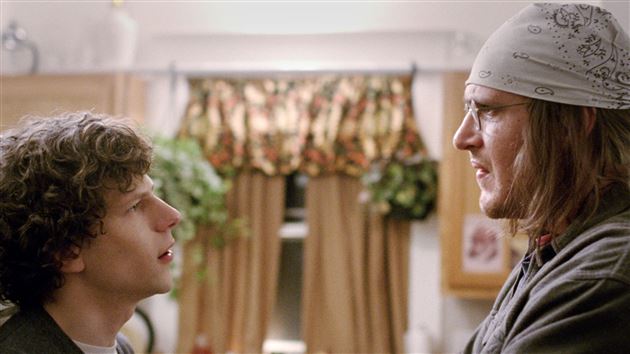
[SPOILER ALERT: There spoilers in this post, but – as usual – NOT in my comments on the film.]
I saw The End of the Tour at the San Francisco International Film Festival. Director James Ponsoldt, Producer David Kanter, editor Darrin Navarro, Producer James Dahl and actor Jason Segel all spoke after the screening.
Ponsoldt said that he generally doesn’t like biopics, and didn’t want to make a film that exists “from the neck up”. He wanted to avoid a movie that was ” just two smart guys trying to top each other”.
Ponsoldt decribed The End of the Tour as an “unrequited platonic love story, from the perspective of Lipsky” The moment at the end when Lipsky receives a package from Wallace tells it all. Ponsoldt said that the Rolling Stone article was killed because it wasn’t juicy enough – and Lipsky felt relieved.
Ponsoldt got access to Lipsky’s tapes of the real conversations between the two, and Eisenberg and Segel got to listen to them. Segel noted that “popular culture was the great equalizer”, the common denominator between the two.
And how do you make a compelling movie about two guys talking? Ponsoldt adopts Waldo Salt’s guidance about screenwriting: articulate the character’s greatest human need and recognize whose story it is it? Ask if it’s a struggle for power. Focus on whose scene it is.
Navarro said the key is to allow the conversations to feel as real as possible, making it feel like you were in the room. He lets the “inconsistencies and inaccuracies of speech” let you know about where the characters are going.
Jason Segel sees playing David Foster Wallace as about Wallace’s feeling of “not enough”. Segel believes that Wallace’s Infinite Jest poses question “does anyone else feel this way?” and Segel says that sometimes he DOES feel that way.
Jason Segel said that the tapes constitute the “best conversation I’ve ever heard”. The End of the Tour is the best movie about conversation that I’ve seen.
